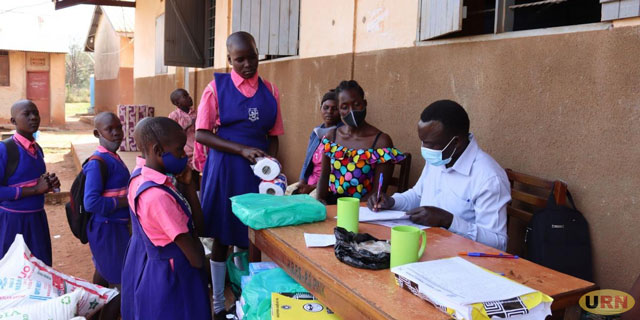
Currently, the government allocates Shillings 17,000 Ugandan per learner at the primary level and Shillings 56,000 per student enrolled under the USE program.
Kampala, Uganda | THE INDEPENDENT | As schools open up their gates to welcome learners for the final and promotional term of this academic year, the government has taken a significant step by releasing sh109.71 billion in capitation grants. Dr. Denis Mugimba, the Spokesperson Ministry of Education and Sports, says the release is just coming in time to ensure a smooth running of teaching-learning activities.
He adds that the funds are already in the school accounts, thereby ensuring a seamless operation of the education system.
“A school that has not received its proportions should immediately contact the respective officer of their local government,” the spokesperson noted.
Available information indicates that Shillings 61.49 billion is earmarked for Universal Primary Education (UPE), with the remainder allocated to secondary schools under the Universal Secondary Education (USE) program.
The funds constitute 33 percent of the annual capitation grant budget, which stands at Shillings 329.16 billion for both programs implemented in 12,433 UPE and 1,206 USE schools, excluding those in Kampala. The capitation grant is an annual commitment from the government aimed at supporting the education of learners.
Currently, the government allocates Shillings 17,000 Ugandan per learner at the primary level and Shillings 56,000 per student enrolled under the USE program. According to guidelines, a significant portion of the grant, amounting to 35 percent, is designated for essential instructional and scholastic materials, including items such as chalk.
Additionally, 20 percent of the grant is allocated for co-curricular activities. School management receives 15 percent, the administration is allotted 10 percent, and 20 percent is earmarked for contingency expenses. In recent years, headteachers have consistently voiced their concerns regarding the delayed disbursement of these funds, which have had a detrimental impact on various learning activities.
Consequently, the government has responded by instituting a revised approach to the allocation of these funds, ensuring they are released in time prior to the commencement of each new term. Francis Ssematimba, the headteacher of St. Maria Goretti Mpugwe Primary School and the Chairperson of the Uganda National Teachers Union-UNATU for Masaka City, says that despite the commendable effort to release funds in a timely manner, concerns persist that the allocated funds remain insufficient.
“In order to address the requirements of schools within the universal education framework, we require a significantly larger allocation than the current 17,000 per year. The limited funds sometimes compel schools to seek fees from students to supplement the financial support provided by the government,” Ssematimba adds.
In his argument, Shillings 17,000 is allocated for an entire year, which translates to approximately 5,666 per pupil per term. However, Dr. Mugimba rebukes this method of calculation of funds the government is giving to schools, asserting that it is not appropriate because the entire resource envelope for the universal education programs far exceeds the capitation grants.
“For example; in FY2022/2023 the entire resource envelops for UPE and USE is shillings 2.139 trillion…the entire resource envelop includes money for other components such as wage, capital development, instructional materials, school facilities grant, grant aiding for new schools, inspection for local government,” he adds.
But, while meeting the education policy review commission earlier this year, Dr. Hamis Mugendawala, the Manager of Policy Research and Innovation at the National Planning Authority, highlighted the urgency of increasing the capitation grant.
Dr. Mugendawala proposed that for the grant to have a substantial and transformative impact, it should be elevated to Shillings 63,546 per child at the primary level, Shillings 532,720 for lower secondary students, and Shillings 885,440 for those in upper secondary education. Such an increase in funding, Dr. Mugendawala argued, would not only alleviate the burden of fees and charges in government schools but also enhance the overall educational experience for students.
Meanwhile, as the new term commences, the issue of regulation of schools seems to remain elusive, placing a heavy financial burden on parents who must cope with escalating costs to educate their children. This predicament persists despite prior commitments by the government to establish comprehensive regulations for both public and private schools.
In a recent development, Parliament made efforts to pressure the Ministry of Education and Sports to finally present the long-anticipated regulations. However, nothing substantial has emerged from this endeavor, with only the usual reassurances and promises being offered.
****
URN
 The Independent Uganda: You get the Truth we Pay the Price
The Independent Uganda: You get the Truth we Pay the Price



